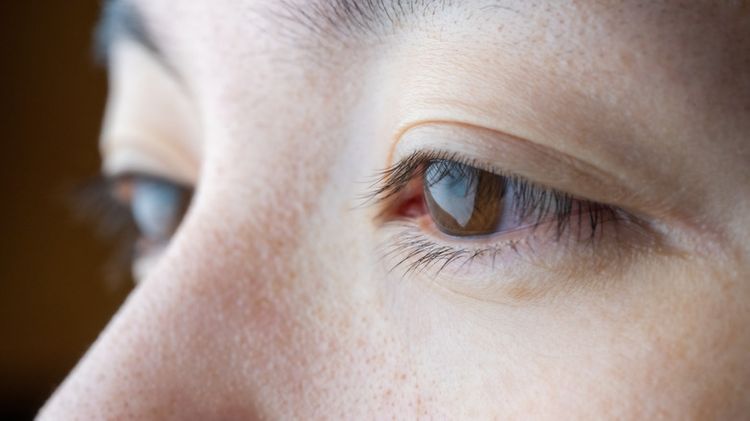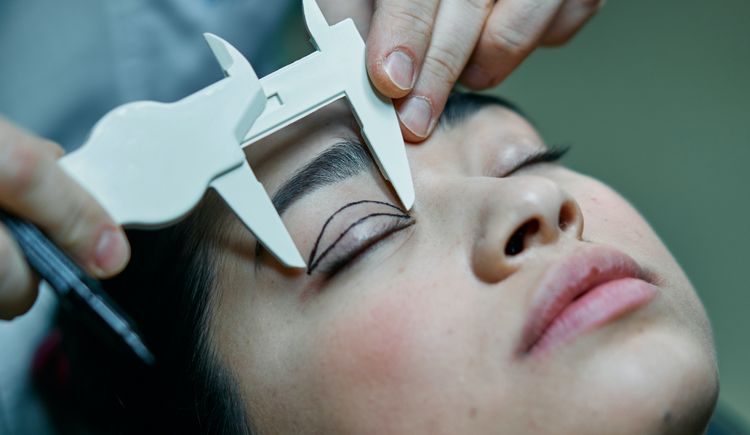Both monolids and double eyelids are naturally occurring types of eyelids. Whether or not a person has a monolid or a double eyelid primarily comes down to genetics, although several other factors, including certain medical conditions, can play a role in the appearance of a double eyelid or monolid.
What is a Double Eyelid?
A double eyelid is an eyelid shape that has a crease in it, giving it the appearance of two eyelids. This feature is typical of many ethnicities, including Caucasian, Middle Eastern, African and Asian. Double eyelids are a dominant gene, meaning they are more common than the monolid gene.
Some double eyelids are very defined. This is particularly common in people with deep-set eyes. Other double eyelids may have a minimal crease that is only slightly visible.
Most people have double eyelids due to their genetics. Other reasons someone may have double eyelids or what appear to be double eyelids include:
- Aging
- Ptosis
- Fat accumulation
- Underdevelopment or weakening of the eyelid muscles
Double eyelids may become more pronounced over time due to aging. As the skin around the eyes loses its elasticity and relaxes, the double eyelid may even develop into a hooded eye.
Double eyelids are natural and generally do not cause any health issues for people. However, when the upper eyelids droop or sag, they may begin to affect the vision.
Drooping or sagging double eyelids can sometimes cause:
- Difficulty reading
- Pain in or around the eyes
- Needing to tilt the head back to see properly
- Impaired driving ability
- Tension headaches
- Dry or watery eyes
The issues listed above are more common in older people with double eyelids, although the same problems can occur due to specific cosmetic procedures and diseases.

What is a Monolid?
Unlike a double eyelid, a monolid eyelid has no crease. Monolids are common in people of East Asian descent. However, it’s possible for people of any race or ethnicity to have a monolid, especially if they have elongated or almond-shaped eyes.
Conversely, not all people of Asian descent have monolids. Researchers estimate that roughly 50% of Asian people have monolids.
Monolid eyelids are sometimes confused with hooded eyes, as the two can appear similar. But as opposed to having no crease, hooded eyes have creases that are covered by the excess skin directly under the brow bone folding over the upper eyelid, much like a hood.
Monolids should also not be confused with ptosis. Ptosis occurs when the upper eyelids begin to sag over time due to the supporting muscles losing strength. Ptosis can also be caused by eye injuries, diseases and neurological problems.
A monolid can be transformed into a double eyelid through double eyelid surgery. But, as the procedure is often used for cosmetic purposes, insurance typically does not cover it.
Double eyelid surgery can also be used to treat the following:
- Loose or sagging skin around the eyes that can impair vision
- Fatty deposits that can make the eyelids appear puffy
- Under eye bags
- Drooping lower eyelids
- Excess skin and wrinkles on the lower eyelid
The procedure, known as blepharoplasty, was developed in 1896 by Japanese surgeon M. Mikamo, who saw the double eyelid as a more attractive feature than the monolid.
Which Type of Eyelid is Attractive?
A harmful belief exists that double eyelids are more attractive than monolids. This belief is unfounded and is largely due to Eurocentric beauty standards and a lack of representation of East Asian features in Western media.
In reality, neither eye shape is inherently attractive or unattractive. The only remarkable difference between the two is that makeup techniques that suit a double eyelid may not be as easily achieved on a monolid. But the opposite is also true.
For decades, eyelid surgery has been popular in many East Asian countries. The aim of the surgery is to create an artificial eyelid crease to mimic the appearance of a double eyelid. The procedure is still one of the top cosmetic procedures in Eastern Asia today. However, views on the monolid are changing.
In recent years, people with monolids have begun embracing the feature, with beauty influencers offering insights and tutorials that celebrate monolids as a unique and beautiful feature. Representation of the monolid in the beauty industry has also increased, showcasing the fact that the monolid can be just as desirable an attribute as a double eyelid.

